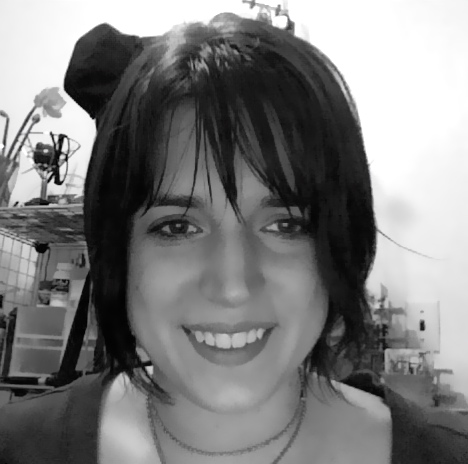A few weeks ago my lovely, perfect, amazing bag started cracking. The leather literally started pealing away like those pictures of broken desert earth. This was, needless to say, very sad. But! Also an opportunity to try to make something even better.
I wanted a bag that would exactly fit everything that I considered necessary to carry around with me, but no more. The no more part is fairly key, as I will fill whatever bag I carry to capacity. I divided up my things into six categories, measured them and started modeling.
I cut the 167 mylar triangle inserts of the bag using my craftROBO. The trace paper patterns were also drawn using a pen attachment. Really, everyone should have a craftROBO. They turn impossible tasks into merely unreasonable ones.
After assembling the patterns and cutting out appropriately sized pieces from my leather hides, I coated each layer (yellow leather, mylar and blue-grey leather) in rubber cement. This, I believe, was the key step in the process. Mylar holds its shape perfectly, but is quite slippery and leather, while is has some grip, is very malleable. While this malleableness is great when trying to fudge a misaligned seam together, it would disastrous when multiplied over dozens of pieces. Laminating these two materials together, however, gave me stability and accuracy in the body of each piece along with some wiggle room around the edges.
Next came the especially tedious part! After letting the rubber cement dry — FYI, rubber cement adheres best when the surfaces being joined both have a thin, mostly dry layer on them — I traced the patterns onto the inner surface of the blue-grey leather using chalk transfer paper and a creasing wheel. I then placed the mylar triangles in their appropriate positions and coated their other side in rubber cement.
Once that final coat of rubber cement dried I carefully aligned and laid down the yellow leather layer. After taping down the paper pattern I cut through all layers with a rotary cutter, using a small exacto knife to get concave corners.
With the paper pattern still attached I sewed along the edges and between all the interior triangles creating a solid and well defined piece. This step went surprisingly fast and smoothly. The conventional wisdom is that leather will ruin a standard sewing machine. I decided to take the chance, as my machine is quite old and nearing retirement. However, sewing through two layers (with an occasional taste of mylar as well) didn't pose any problems.
Once all the pieces were complete I began assembly, using my paper model for reference. I divided the bag into several components: the back and flap, the bottom and strap, and the interior and front with the intention of assembling each region separately and then joining. That, as it turned out, didn't quite happen. Instead, I started slowing adding pieces together, trying to find the order that would keep as many seams as possible machine-sewable. Surprisingly, I was able to sew all but a single seam on my machine. I somehow managed to sew a 4 piece thick seam without so much as breaking a needle!
Below you can see the results:
In its first week of life my new bag has survived two rainstorms, the attentions of my office's dog and an MIA concert filled with enthusiastic people. Nothing has fallen out, and there has been very little wear. I think this bodes well for its future.
Finally, here's the paper mockup:
Wednesday, October 6, 2010
Subscribe to:
Post Comments (Atom)


No comments:
Post a Comment